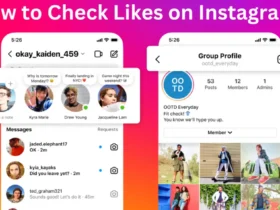Multi CDN and how it enhances your cloud security?
Website management has undergone unprecedented changes in recent times. The quick response time, advanced security, to name a few, are requirements that have compelled the website owners to incorporate techniques that can boost website security and increase loading speed.
Multi CDN is one of the unique techniques which are in the limelight these days. However, before adopting it as an integral component of your website management, you need to what it is and how it maximizes your cloud’s protection.
Let’s jump in deeper to know more about Multi CDN.
What is Multi CDN?
Multi CDN is to be understood in the backdrop of Content Delivery Network (CDN). CDN helps websites to enhance their stream capability and manage traffic using geographically distributed networks.
However, CDN may not be effective in maximizing load speed for users accessing the website from nodes that are not in the proximity of the nearby CDN. Thus, considering the bottlenecks of the CDN, Multi CDN technology is incorporated to manage traffic efficiently.
To be exact, Multi CDN technology fetches data from multiple CDNs from various providers to optimize network performance.
Today, the numbers of digital giants are switching towards Multi CDN technology. However, this has to be done at the cost of activating and managing each CDN individually. Plus, if you want to utilize it to the fullest, you also need to balance the load properly.
How can Multi CDN help with DDoS protection?
Websites being vulnerable to Distributed Denial-of-Service (DDoS) attacks is irrefutable. This not a toothless statement. Multi CDN is becoming increasingly popular as a protection against notorious DDoS attacks.
The reason behind Multi CDN being effective in tackling DDoS is the fact that it ensures protection even when the server is not undergoing any DDoS attack. The enhanced protection is provided through a globally distributed network, which incorporates substantial congestion capacity. Therefore, all DDoS attacks are likely to be absorbed before they could affect website performance.
In addition to this, CDN protection also boosts performance by providing bandwidth up to 100 Tbps. Similarly, bandwidth increases manifolds when multiple CDNs are combined.
Moreover, Multi CDN technology also counters Smurf attacks since it only entertains HTTP or HTTPS. In the same way, reflection attacks or UDP are alleviated using Multi CDN protection.
Multi CDN technology to optimize performance
Splitting traffic among multiple CDNs is one of the commonly used methods to reduce downtime. In short, the end-user is dynamically directed within the network of CDNs. The dynamic route for a particular user depends upon cost, availability, performance, and proximity of the CDN to the end-user.
Incorporating a Multi CDN solution is not a novel addition to the digital world. In fact, many of the notable enterprises are already capitalizing on the Multi CDN strategy to split traffic.
However, everything comes with a cost. Multi CDN is no exception. Despite offering the opportunity to boost performance, it is also likely to trigger security challenges, specifically for those relying on CDN vendors for protection.
Does splitting traffic imply splitting security as well?
The continuously evolving CDN solutions have led CDN vendors to get their delivery stack embedded with the web application. Though it might be fruitful at the vendor’s end, it may create problems for customers, such as inconsistency in availability, quality of the security service, and, more importantly, security risks.
In short, splitting traffic among two or more CDNs is likely to split security as well. For instance, one CDN having high-quality CDN service and separate DDoS scrubbing may result in a clash when interacting with low-quality CDN service and dependent DDoS scrubbing.
To cut the story short, the following are the concerns of splitting traffic into a number of CDNs.
Related Reading: Best Security Practices to Protect Your Self-storage Business from Cyber Attack
Security clashes
As previously discussed, the CDNs may differ in terms of cost, performance, and availability. However, such differences are likely to result in security compromise for traffic. Furthermore, Multi CDN also does not take the load balancing factor into account, and thereby you cannot determine whether the traffic is secured or not.
· Varying protection across CDN vendors
Combining multiple CDN vendors affects the overall protection of the CDN network. Consequently, achieving ideal security goals is not feasible or practical with a Multi CDN strategy.
· Standalone management consoles
Since all CDN vendors are likely to provide separate management consoles, policy changes are difficult to manage. So, the management needs to separately update the console configuration in case of even minor operational changes.
. Absence of centralized reporting
Last but not least, the Multi CDN technology lacks a centralized reporting mechanism. Thus, consolidating attack reports becomes a complex process. Plus, it is also challenging to identify, locate, and analyze defenses in a Multi CDN network.
Making multi-CDN invulnerable and secured
The inconsistency in terms of protection and clash among configurations of different CDNs cannot be denied. However, it can be made invulnerable to the inconsistencies discussed above by integrating a web application that is not depending upon CDN.
In addition to this, other alternatives, such as cloud, prem-on, and hybrid solutions, can also be considered for making the multi CDN impervious.








Leave a Reply